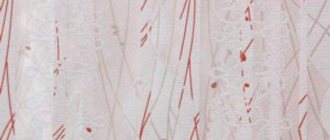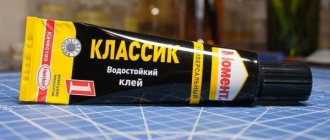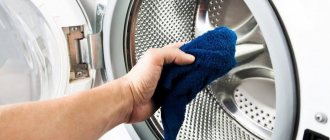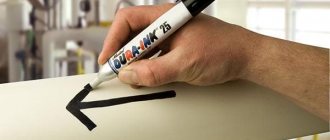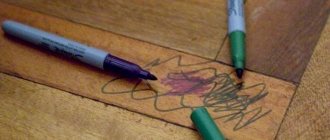/Order/
Cleaning the kitchen is serious business. Prepare your rubber gloves and enthusiasm - in this article we will tell you how to clean the kitchen at home easily and safely for finishing facades, countertops and aprons (including wooden ones!).
But, before you start choosing a recipe, we recommend that you familiarize yourself with the following universal rules and recommendations, which are relevant for both painted/unpainted wooden kitchens and laminated, varnished, plastic facades made of MDF and chipboard.
- For those in a hurry, we advise you to go straight to the recipes using the quick navigation (at the beginning of the article).
General recommendations
- The most important rule is: ALWAYS test the cleaner on an inconspicuous area before cleaning your kitchen. Treat it, then wipe clean and dry, wait 1-2 minutes and evaluate whether the color of the coating has changed, whether the shine has disappeared, etc.
- A greasy coating on kitchen furniture is a mixture of dust with fumes and a tiny suspension of fat that forms during cooking. The older the plaque, the more difficult it is to get rid of it. Therefore, the optimal schedule for “general” cleaning of the kitchen from grease is 1-2 times a year, “major” cleaning is every 2 months using mild products and, of course, when the need arises.
- To clean hard-to-reach areas, crevices, or decorative trim, use a toothbrush dipped in the cleaner from our article. You can also clean narrow crevices with a knife wrapped in cloth.
- Do not use harsh abrasives; only baking soda, a soft toothbrush, or the hard side of a regular foam sponge are acceptable. This is especially true for wooden kitchens, as well as any painted furniture without a top protective coating.
- When cleaning the kitchen, it is better to use a new sponge with a clean abrasive side. An old, greasy sponge can do even more damage.
- At the end of cleaning, it is advisable to wipe the kitchen: clean with a damp microfiber cloth and dry with a clean, dry microfiber cloth. This way you will avoid streaks and residues of the cleaning product itself.
- When cleaning the kitchen, pay special attention to the cabinets above the stove.
And now some special recommendations and warnings.
| For a wooden kitchen (painted with stain, enamel or other types of paint, unpainted but treated with oil/wax/polish/special impregnations/matte varnish, etc. | For all other kitchens: glossy, varnished, plastic, laminated and painted MDF and chipboard sets |
| A wooden kitchen requires the most delicate care. Most “folk” remedies like peroxide, ammonia, alcohol or citric acid are contraindicated for it, as well as ordinary alkali-based household chemicals. | Whether you use expensive or cheap household chemicals, the main thing is that it contains alkali. It is the one that most effectively copes with grease and dirt. |
| Manufacturers of wooden kitchens recommend washing facades only with special products with neutral Ph or a solution of warm water and soap (dishwashing detergent), diluted in a ratio of 5:95. But what if the Fairy solution does not remove old fat and stubborn stains? Ideally, thorough cleaning of the kitchen should be entrusted to special cleaning services, especially if the kitchen is relatively new, with expensive finishes. Our recipes are in most cases safe for wood, but there is still some risk in them. | It is convenient to use a spray bottle to clean the kitchen. |
| When wiping the kitchen, try to move along the grain of the wood, and not against or across. This will allow you to better clean the pores of the material and act more delicately on the fibers. | Before applying cleaning agent to the contaminated area, moisten it, for example, using a spray bottle. Moisture will speed up the chemical process somewhat. reaction and will make cleaning easier. |
| The rag should not be too wet. Excess moisture is harmful to wooden surfaces. | |
| After washing and cleaning wooden furniture, do not forget to treat it with protective wax, oil or polish. |
Operation and care of enamel facades
Enamel facades are aesthetic, durable, lightfast, and resistant to moisture, but you should know that each piece of furniture is intended for a specific purpose of use, so any piece of furniture should be used in accordance with its functional purpose and compliance with the following rules:
- Furniture fronts are installed on cabinet furniture, including kitchen sets. Furniture facades must be used in dry and warm rooms, not subject to temperature changes, with heating and ventilation at air temperatures not lower than +10 degrees C and not higher than +30 degrees C with a relative humidity of 45-60% (GOST 16371-93). Significant deviations from the specified modes lead to a significant deterioration in consumer qualities and damage to furniture.
- It is not recommended to install heating devices (stoves, stoves, ovens, lighting elements, etc.) next to facades, because Contact with surfaces or air whose temperature exceeds 80 degrees Celsius may cause yellowing of the enamel. The location of furniture closer than one meter from heating devices and other heat sources, as well as under direct sunlight, causes deformation of furniture panels.
- Cooling of facades below -25 degrees Celsius is not allowed; cracking and peeling of the paint coating is possible.
- To avoid bending of MDF and swelling of facades, their surface should be protected from prolonged exposure to moisture; Liquids that dissolve paint coatings (acids, solvent, alcohol, acetone, gasoline, etc.) are not allowed to come into contact with the surface.
- Facades should be protected from mechanical damage, which can be caused by exposure to hard objects, abrasive powders, and excessive physical stress.
- Furniture care should be carried out using only high-quality cleaning and polishing agents specially designed for these purposes, in accordance with the manufacturers' instructions attached to them on the method and area (surfaces, materials) of their use. Dust is removed with a clean, dry and soft cloth (flannel, cloth, plush, etc.) It is recommended to clean any part of the furniture as soon as possible after it becomes dirty. If you leave contamination for some time, the risk of streaks, stains and damage to furniture products and their parts increases significantly.
If these rules are followed, the facades will last for many years.
Manufacturer's guarantees for furniture facades
The manufacturer guarantees that the product meets the above stated characteristics, subject to the conditions of transportation, storage, assembly and maintenance rules for the product. The manufacturer assumes warranty obligations for a period of 18 months from the date of installation of the product. Claims regarding the quality of facades are accepted within the warranty period at the place of purchase. The warranty obligations include the elimination of defects on the facades that arose through the fault of the Manufacturer, or the replacement of facades with identified manufacturing defects.
The warranty is void in the following cases:
In case of non-compliance with the operating instructions, the manufacturer is not responsible and the warranty is void.
The warranty does not cover malfunctions and defects caused by the following reasons:
- in the presence of mechanical damage resulting from loading and unloading operations performed by the customer, transportation, storage, installation by the customer;
- if there are mechanical damages on the surfaces of the facades, thermal influences or traces of exposure to chemicals, a large volume of liquid entering the facades, etc.;
- mechanical and other damage resulting from natural wear and tear of the product;
- improper use and violation of product operating rules;
- deliberate damage to the product;
- in cases of damage to the product under the influence of force majeure (fire, flooding and other natural disasters).
In accordance with the Decree of the Government of the Russian Federation dated January 19, 1998. No. 55 furniture is included in the list of goods that cannot be returned or exchanged.
Due to improvements in production technologies, the arrival of new materials, and changes in the market, the manufacturer has the right to make changes to product designs, their sizes, colors, and to increase or decrease the product range.
Method 1. Express cleaning and polishing for advanced cases (soda + vegetable oil)
PURPOSE: wooden UNpainted kitchens and countertops (coated with matte varnish, oil, wax, polish, any impregnations), varnished and laminated kitchens made of MDF and chipboard, aprons made of any materials.
This recipe is especially helpful if you need to bring an old kitchen or countertop back to life with minimal time and money.
- With its help, you can, firstly, easily remove tightly adhered drops of fat, plaque and stains. Secondly, to “seal” the pores of the wood, protecting it from moisture and dirt. And thirdly, to give the facades a natural shine and brightness. Essentially, this old homemade recipe replaces both cleaner and furniture polish.
CAUTION: Painted wood kitchens and light wood kitchens (oil may yellow slightly).
CLEANING FREQUENCY: It is important that cleaning with soda-oil cleaner is carried out regularly - at least every 2 months. The fact is that oil tends to oxidize and lose its protective properties, possibly changing color.
INSTRUCTIONS:
Step 1. Mix 1.5 tablespoons of baking soda with 1 tablespoon of vegetable oil (you can use more in a ratio of 1.5:1).
Step 2. Apply the resulting “scrub” to contaminated surfaces, paying special attention to cabinets in the stove area. The soda will crumble a little, and the oil will be absorbed like polish. You will see that the tree will become cleaner and a little brighter before your eyes.
Step 3: Wipe treated areas with a clean, damp microfiber or soft cloth.
Step 4. Wipe the remaining cabinets from dust and light dirt with a damp cloth. If necessary, you can treat the entire kitchen with an oil-soda solution.
Caring for furniture covered with plastic or enamel
If your furniture is covered with plastic or painted with enamel, then it can be washed with any washing powder or detergent. To do this, you need to make a special, but very simple solution - dilute a liter of water at room temperature with a tablespoon of washing powder. Small spots that may have appeared on the plastic surface of furniture or a tabletop can be eliminated using a match head dipped in water. To do this, you need to lightly rub the area where you saw the stain. Then carefully wipe off the remaining sulfur with plain water.
Method 3. Universal recipe for deep and thorough cleaning (6% vinegar + isopropyl alcohol)
PURPOSE: For general cleaning of old grease and other complex stains of painted and unpainted wooden kitchens, laminated, varnished, plastic glossy facades made of MDF and chipboard, all types of countertops and aprons.
CLEANING FREQUENCY: 1-2 times a year.
INSTRUCTIONS:
Step 1. Mix 6% vinegar with rubbing alcohol (isopropyl) alcohol in a 7:1 ratio and add a few drops of liquid soap to the solution.
Rubbing isopropyl alcohol can be purchased at outlets that sell printer supplies, companies that sell fiber optics, and specialty online stores. You should not experiment with other types of alcohol.
Step 2: Wipe the cabinets with the mixture using a microfiber cloth.
Step 3: Now wipe the kitchen clean with a cloth soaked in warm water.
Step 4. Finally, rub a special wood furniture oil that contains beeswax into all surfaces. This action will “seal” the pores and protect your kitchen from stains, dirt, moisture and grease for a long time.
Removing other stains
The problem of removing stains is difficult to solve due to the rough surface. Not all cleaning products for mirror coatings and glass are suitable.
How to clean frosted glass on doors:
- Use a chalk-based solution. Pour 200 ml of water into a container, add 3 tbsp. l. crushed chalk. Take a suede cloth and sandblast it on both sides. Pay special attention to stains. Treat dried contaminants more strongly and leave to acidify. Remove any remaining composition with warm water and wipe the surfaces dry.
- For severe stains, bleach will help. Dilute 50 g in 1 liter of water. Treat only dirty areas. Wait 5 minutes, rinse with water.
For interior doors with frosted glass, a steam mop, steam cleaner or steam generator is suitable. The kit includes a special nozzle. It looks like a point nozzle with a rubber scraper.
How to wash glass on a door: you need to start spraying steam from a distance of 30 cm (so as not to damage the sandblast), gradually heat the surface, bringing the nozzle closer.
The cleaning method does not require the use of household chemicals, copes with any stains, kills fungi, bacteria and mold. You cannot use a steam cleaner to wash glass when the temperature outside is below freezing (even interior doors). A sudden change in temperature will cause cracks to appear. Instead of a steam cleaner, use an iron with a steam function.
Method 4. Ammonia + warm water
INTENDED USE: For all types of surfaces, but with great care for wooden surfaces.
CLEANING FREQUENCY: if necessary, but not more often than once every two to three months.
INSTRUCTIONS:
Add ammonia to warm water in a 1:1 ratio, then remove dirt with a sponge or spray the product from a spray bottle, wipe the treated area clean with a damp cloth. Finally, dry the surface with a dry soft cloth or microfiber cloth.
How to wash your headset
To keep your kitchen set sparkling clean, you need to follow the correct cleaning technology.
First of all, remove dirt using a cleaning solution. At the same time, do not let it soak in, otherwise the facades can be damaged. It is better to apply the liquid first to a cloth and only then to the furniture. When cleaning, concentrate your efforts on one item, do not apply the composition to the entire set at once. Once you're done cleaning one, you can move on to the next.
Then wipe off the detergent with a damp, clean cloth. Then wipe the facades dry. At the final stage, you can apply polish to prolong the freshness of the cleaning.
Method 5. Hydrogen peroxide + water
INTENDED USE: Only for kitchens, splashbacks and countertops made of MDF and chipboard. The product will help not only clean the kitchen of grease and dirt, but also disinfect the areas treated with it.
- It is permissible to clean a wooden kitchen with hydrogen peroxide, but only if you need to remove mold.
CLEANING FREQUENCY: If necessary.
INSTRUCTIONS:
Mix these ingredients in a 1:2 ratio, treat the desired areas with the resulting liquid using a rag (it is best to spray the product from a spray bottle).
What not to clean
Sandblasting should be cleaned carefully. Not all products can be used to remove contaminants.
What you should not use to wash frosted glass on doors, cabinets and other interior elements:
- cleansers based on fluorine, silicone, acids;
- alkaline compounds;
- hard brushes and scrapers;
- abrasives (mustard, tooth powder);
- gasoline.
The use of these products will damage the sandblaster. Scratches form.
Method 10. Removing fat using a steamer
PURPOSE: To remove old greasy deposits on all kitchen surfaces except wooden ones (!).
INSTRUCTIONS:
If you have a clothes steamer, then you can treat the entire kitchen with it, from the facades to the apron. The method is good for its simplicity and effectiveness. After such a “bath,” the kitchen should be wiped with soapy water and then with a clean, damp and dry microfiber cloth.
- It is advisable not to steam the edges, because this is the weakest point of any furniture made from MDF and chipboard.
Caring for wooden furniture
It is better to clean natural wood furniture (unpainted surfaces) with laundry soap and water, and then simply wipe it dry. Under no circumstances should you use powders, soda, toothpaste or dishwashing detergents for cleaning. Products with abrasives and high acidity will also damage the wooden surface. It is best if a special wax is added to the solution for washing wooden furniture, because from regular contact with water, sooner or later the wood loses its shine (when the surface is not covered with varnish).
If the surfaces of unpainted wooden furniture are still very dirty, you can try to remove the stains with a knife and try not to press too hard.
Method 11. Removing complex stains using a melamine sponge
Surely you have already heard about melamine sponge or even tried it in action. This sponge consists of many thin melamine rubber fibers; like an eraser, it easily grabs and rolls off dirt from any surface. Contrary to myths, melamine miracle eraser is only harmful if ingested.
For this reason, we recommend not scrubbing interior shelves, drawers, and cabinets with a sponge. After cleaning, the crumbs must be carefully collected and all facades wiped clean. And, of course, the sponge should be kept away from children and animals.
PURPOSE: To remove old greasy deposits on all kitchen surfaces except wooden (!) and any countertops. Use with great care on painted facades - there are cases when the melamine sponge removed the paint along with the stains.
INSTRUCTIONS:
Wet the sponge in water, squeeze out excess moisture, then wipe the dirty areas with it. Carefully collect any accumulated dirt and discard it.
How to update furniture yourself?
Painted furniture that has lost its fresh appearance may not need to be cleaned or washed - no matter how hard you try, the situation will only be corrected by updating the color. To make the furniture sparkle with new shades, cover it with a thin layer of oil paint and wait until it dries thoroughly, then coat the furniture with enamel to add shine. Let's reveal a little secret: in order for the surface to emit a mirror shine, the enamel must first be heated in a water bath at a temperature of 50 degrees Celsius and stirred.
Benefits of a matte kitchen
Let's look at the advantages of matte facades, which allow them to be leaders in the kitchen furniture segment:
- elegant and noble appearance, the ability to choose furniture to suit any interior style;
- ease of maintenance - dirt and fingerprints are less noticeable on matte surfaces than on glossy ones. The matte façade is easier to clean;
- scratches are less noticeable (compared to glossy kitchens);
- wide selection of manufacturing materials;
- absence of glare typical of glossy surfaces.
However, matte facades also have some disadvantages. This is a less narrow palette of colors than glossy surfaces. In addition, matte surfaces do not fit into all modern interiors.
What items are needed to clean kitchen facades?
Due to the fact that surfaces are very easily damaged, the following materials should be used:
It is important that during the cleaning process, even for heavily soiled areas, you should not use hard metal brushes!
When choosing a cleaning product, you should not buy substances that contain large abrasive particles, as scratches and damage to the surface will appear during the cleaning process.
Therefore, it is necessary to use gels and products that contain substances that break down fats to clean surfaces. If the detergent consists of ammonia and acids, stains may remain on the cleaned facades.
Painted surfaces
- Rub half a lemon onto problem areas. After 10 minutes, rinse with water.
- Dishwashing liquid and citric acid, a tablespoon each, and a teaspoon of water. Dilute the mixture in a bowl and apply to grease stains. After 5 minutes, remove with a clean napkin.
- For such a coating, liquid laundry soap is well suited, which is applied to the surface for 5 minutes and then washed off.
To remove greasy stains from MDF with any coating, melamine sponges are suitable. Lightly moisten the sponge with clean water and wipe the stain. Like an eraser, it will erase dirt.
Stains and traces of grease spoil the appearance of MDF surfaces. But you can get rid of them in 15 minutes using products that are available in every home.
Beginning housewives are faced with the fact that all the ingredients in the borscht are fresh, the recipe has been followed, but, Clean water is the key to health and excellent well-being. Therefore, in order to always be in, Parents, in the first stages of their babies’ lives, are constantly faced with the need to pasteurize cow’s milk. It’s not difficult to tidy up the oven after cooking, but what to do with old





